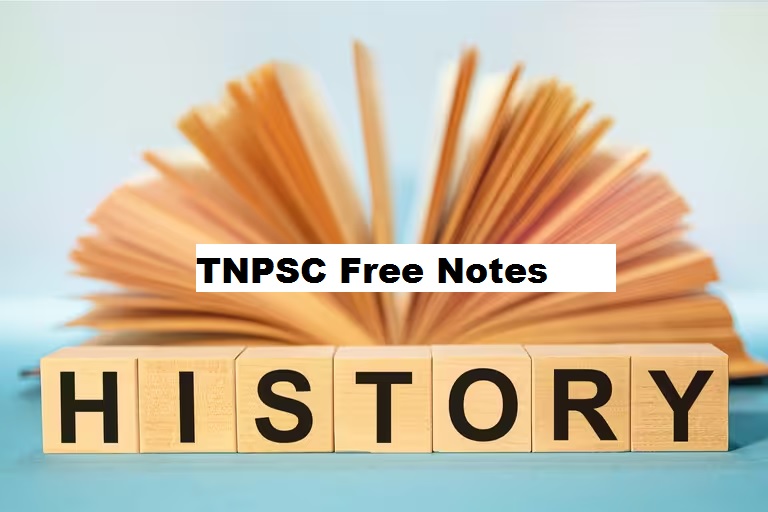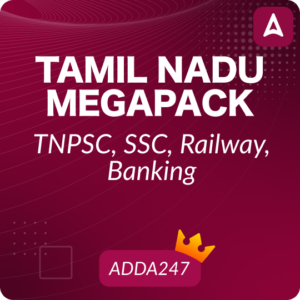இந்தக் கட்டுரையில், TNPSC குரூப் 1, குரூப் 2, குரூப் 2A, குரூப் 4 மாநிலப் போட்டித் தேர்வுகளான TNUSRB, TRB, TET, TNEB போன்றவற்றுக்கான முறைகள் இலவசக் குறிப்புகளைப் பெறுவீர்கள்.தேர்வுக்கு தயாராவோர் இங்குள்ள பாடக்குறிப்புகளை படித்து பயன்பெற வாழ்த்துகிறோம்.
Pandya Administration, Economy and Irrigation
Pandyan kings preferred Madurai as their capital.
Madurai has been popularly venerated as Kudal and Tamil Kelukudal.
The Kings are traditionally revered as Kudalkon, Kudal Nagar Kavalan, Madurapura
Paramesvaran.
The titles of the early Pandyas are Pandiyatirasan, Pandiya Maharasan, Mannar
Mannan, Avaniba Sekaran, Eka Viran, Sakalapuvana Chakkaravarti.
Titles of the later Pandyas in Sanskrit include Kodanda Raman, Kolakalan,
Puvanekaviran, Kaliyuga Raman.
Titles in chaste Tamil are Sembian, Vanavan, and Thennavan.
The Pandyas derived military advantage over their neighbours by means of their horses,
which they imported through their connection to a wider Arab commercial and cultural
world.
Palace and Couch
Royal palaces were called Tirumaligai and Manaparanan Tirumaligai.
Kings, seated on a royal couch, exercised the power.
The naming of couches after the local chiefs attests to the legitimacy of the overlordship
of the kings.
The prominent names of such couches are Munaiya Daraiyan, Pandiya Daraiyan and
Kalinkat Traiyan.
The king issued royal order orally while majestically seated on the couches.
It was documented by royal scribe called Tirumantira Olai.
Royal Officials
A band of officials executed the royal orders.
The Prime Minister was called uttaramantri.
The historical personalities like Manickavasagar, Kulaciraiyar and Marankari worked as
Ministers.
The royal secretariat was known as Eluttu Mandapam.
Akapparivara Mudalikal were the personal attendants of the kings.
The most respected officials were Maran Eyinan, Sattan Ganapathy, Enathi Sattan, Tira
Tiran, Murthi Eyinan and others.
The titles of military commanders were Palli Velan, Parantakan Pallivelan, Maran Adittan
and Tennavan Tamizhavel.
Political Divisions
Pandy Mandalam or Pandy Nadu consisted of many valanadus, which, in turn, were
divided into many nadus and kurrams.
The administrative authorities of nadus were the nattars.
Nadu and kurram contained settlements, viz., mangalam, nagaram, ur and kudi, which
were inhabited by different social groups.
A unique political division in Pandy Mandalam is Kulakkil, i.e. area under irrigation tank.
For instance, Madurai is described in an inscription as Madakkulakkil Madurai.
The duty of the nattar was to assess the qualities of land under cultivation and levy
taxes.
In surveying the lands, the officials used rods of 14 and 24 feet.
After the measurement, the authorities donated the lands.
Salabogam land was assigned to Brahmins.
The land assigned to ironsmiths was called tattarkani for carpenters, it was known as
thatchar-maaniyam.
Bhattavriutti is the land donated for Brahmin group for imparting education.
Economy
It was not the Khalji’s invasion from the north that brought the Muslims into Tamil
country for the first time.
Arab settlements on the west coast of southern India, from the 7CE, led to the
expansion of their trade connection to the east coast of Tamizh country.
This was because the governments of the east coast pursued a more liberal and
enlightened policy towards the overseas traders.
Their charters exempted traders from various kinds of port dues and tolls.
In Kayal, there was an agency established by an Arab chieftain by name Malik-ul-Islam
Jamaluddin.
This agency facilitated the availability of horses to Pandya kings.
In the inscriptions, the traders are referred to as nikamattor, nanadesi, ticai-
ayiratuainutruvar, ainutruvar, manikiramattar and patinen-vishyattar.
They founded the trade guilds in Kodumpalur and Periyakulam.
The goods traded were spices, pearls, precious stones, horses, elephants and birds.
In the thirteenth and fourteenth centuries, horse trade was brisk. Marco Polo and
Wassaff state that the kings invested in horses as there was a need of horses for
ceremonial purposes and for fighting wars.
Those who were trading in horses were called kudirai-chetti.
They were active in maritime trade also. The busiest port town under the Pandyas was
Kayalpattinam (now in Thoothukudi district) on the east coast.
Gold coins were in circulation as the trade was carried through the medium of gold.
It was variously called kasu, palankasu, anradunarpalankasu, kanam, kalancu and pon.
The titular gods of the traders are Ayirattu Aynurruvaar Udaiyar and Sokka Nayaki
Amman.
The periodically held fairs were called Tavalam in settlements called teru where the
traders lived.
Irrigation
The Pandya rulers created a number of irrigation sources and they were named after
the members of the royal family.
Some of them were Vasudeva Peraru, Virapandya Peraru, Srivallaba Peraru and
Parakirama Pandya Peraru.
The tanks were named Tirumaleri, Maraneri, Kaliyaneri and Kadaneri.
On both side of the rivers Vaigai and Tamiraparni, canals leading to the tanks for
irrigation were built.
The Sendan Maran inscription of Vaigai river bed speaks of a sluice installed by him to
distribute the water from the river.
Sri Maran Srivallabhan created a big tank, which is still in use. Like Pallavas in northern
districts, Pandyas introduced the irrigation technology in the southern districts of Tamil
country.
In building the banks of the tanks, the ancient architect used the thread to maintain the
level.
Revetment of the inner side of the banks with stone slabs is one of the features of
irrigation technique in Pandya country.
In the time of the later Pandyas (around 1212), an official constructed a canal leading
from river Pennai to the lands of Tiruvannamalai temple.
In dry-zone Ramanathupuram also, tanks were created.
In these areas, such irrigation works were done by local administrative bodies, local
chiefs and officials.
Repairs were mostly undertaken by local bodies. Sometimes, traders also dug out tanks
for irrigation.
Iruppaikkuti-kilavan, a local chief, built many tanks and repaired the tanks in disrepair.
The actual landowning groups are described as the Pumiputtirar. Historically they were
locals and hence they were referred to as nattumakkal.
The communal assembly of this group is Cittirameli-periyanattar.
**************************************************************************
| Adda247 TamilNadu Home page | Click here |
| Official Website=Adda247 | Click here |




